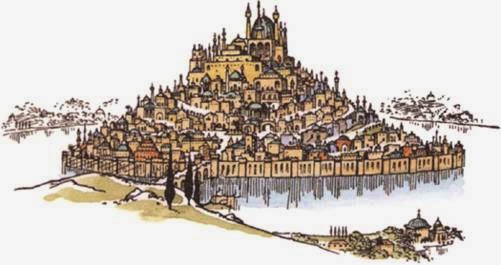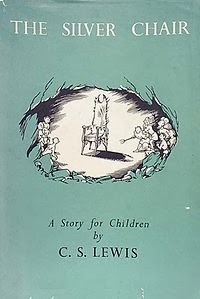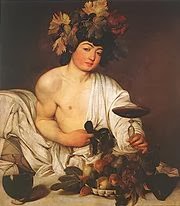“In the last days of Narnia, far up to the west beyond Lantern Waste and close beside the great waterfall, there lived an Ape.”
The Last Battle is the final book in the Narnia Chronicles. With the last three books Lewis seemed to be moving further from the realm of children’s novels and into a more intellectual adult world of surprising complexities.
Esoteric in its make-up, The Last Battle begins with an ape named Shift, who, by dressing a donkey named Puzzle in a lion’s skin, tries to convince the Narnians that Aslan has returned to Narnia. Prompted by Calormen treachery, they soon combine Aslan into Tashlan, a mixing of Aslan and the Calmoren god Tash, and force the Narnians to work, cutting down the Talking Trees of the forest for profit. Prince Tirian and his trusty unicorn, Jewel, discover the falsity of their enterprise, but are taken captive by the Calormens, only to be freed by Eustace and Jill They discover the fraud of the false “Tashlan” while rescuing Jewel from the stables, but learn that Cair Paravel has fallen to the Calormens. The Battle of the Stable is fought with the Calormens and their forces, whereupon Eustace, Jill and the one faithful dwarf, Poggin, find themselves inside the stable, followed by Tirian in his battle with Rishda Tarakan, the leader of the Calormens. Instead of a stable, they find that they are in a beautiful and wondrous land, but then, to the surprised horror of all, Tash unexpectedly appears and snatches Rishda under his arm. The Pevensie children appear (minus Susan) and Peter orders Tash to leave, whereupon Aslan comes and all the dead people and animals either file by on Aslan’s right and enter Aslan’s country or file by on his left and disappear. The old earthly “outside” Narnia begins to be devoured by dragons and giant lizards, and finally the sun is squeezed out by a giant, yet Aslan leads his people “further up and further in” to the real Narnia. It may appear to be the end of the chronicles but, as Lewis says, “… it was only the beginning of the real story …… they were beginning Chapter One of the Great Story which no one on earth has read: which goes on forever: in which every chapter is better than the one before.”

Emeth, the Calmoren warrior who is allowed into Aslan’s country, is a curious insertion by Lewis. Emeth has followed another god with a sincere belief all his life, yet when he meets Aslan, the lion tells him, “Child, all the service thou hast done to Tash, I account as service done to me …… if any man swear by Tash and keep his oath for the oath’s sake, it is by me that he is truly sworn, though he know it not, and it is I who reward him. And if any man do a cruelty in my name, then, though he says the name Aslan, it is Tash whom he serves and by Tash his deed is accepted.” Lewis is not advocating universal salvation, only that anyone who is truly and openly seeking the truth about God, will surely find him. In contrast, the Narnian dwarves are true cynics; while they have been raised in Narnia and told about Aslan, they stubbornly refuse to acknowledge the truth and, though Aslan gives them a marvellous banquet, in their self-deception they are not able to even properly taste the good food set before them. In spite of being raised in Narnia, their wilful refusal to entertain any ideas but their own will prevent them from seeing Aslan’s Country.
While this novel is written for children, Lewis has included concepts that would be beyond some adults. Professor Digory’s comment near the end of the book, “It’s all in Plato, all in Plato ….” gives us a clue to one Platonic theme, although there are a few enmeshed in the chronicles. In Plato’s famous Allegory of the Cave, cave-dwellers believe images on the wall in front of them are real, but find they are only flickering shadows cast by more original objects held up against a fire which is behind them. One of the cave-dwellers turns around to see what is behind his back and why the objects on the wall appear as they do, then he ascends out of the cave into the world above where he sees that the artificial copies on the wall of the cave and the fire itself were only themselves inferior copies of a much more original reality. Plato believed that every evident appearance in the material world is a communion with a higher, perfect spiritual reality. For example, anything that attempts to capture beauty, will never capture the reality of beauty perfectly. An overworld of self-subsisting ideas exists beyond the world of material things, and these ideas, or forms, themselves participate in the one single highest reality, Plato called “the Good.” Thus, in The Last Battle, the earthly Narnia is only a copy or a shadow of the Heavenly Narnia which is the form of the perfect reality.
 |
|
And lastly, it would be appropriate to touch on the fate of Susan Pevensie. All the Pevensies appear in the real Narnia because they have recently died in a train crash, all except Susan, who has grown vain and self-absorbed, and has moved away from their adventures and beliefs of Narnia. I am a little perplexed as to what to make of this revelation. On one hand, I am bothered that Lewis treated her fate in a rather short, curt manner, after she had been such an important character in the other stories. On the other hand, I am glad that Lewis did not make a perfectly “happily ever after situation.” Given that Susan had replaced her faith with material desires, it was providential that she did not perish in the crash that killed her family; there is still hope that she can find the real Narnia in the end. As Lewis wrote in a letter to a child:
“The books don’t tell us what happened to Susan. She is left alive in this world at the end, having by then turned into a rather silly, conceited young woman. But there’s plenty of time for her to mend and perhaps she will get to Aslan’s country in the end ……. in her own way.”
Wow! What a finale! And now I can say that I’ve read all the Chronicles of Narnia and have a much better understanding of them. I can hardly believe all the themes and ideas that Lewis wrote into them and though I know another reading will bring more enlightening details, there will always be more to discover!
C.S. Lewis Project 2014
Other Narnia Books


.jpg)






.jpg)


.jpg)







